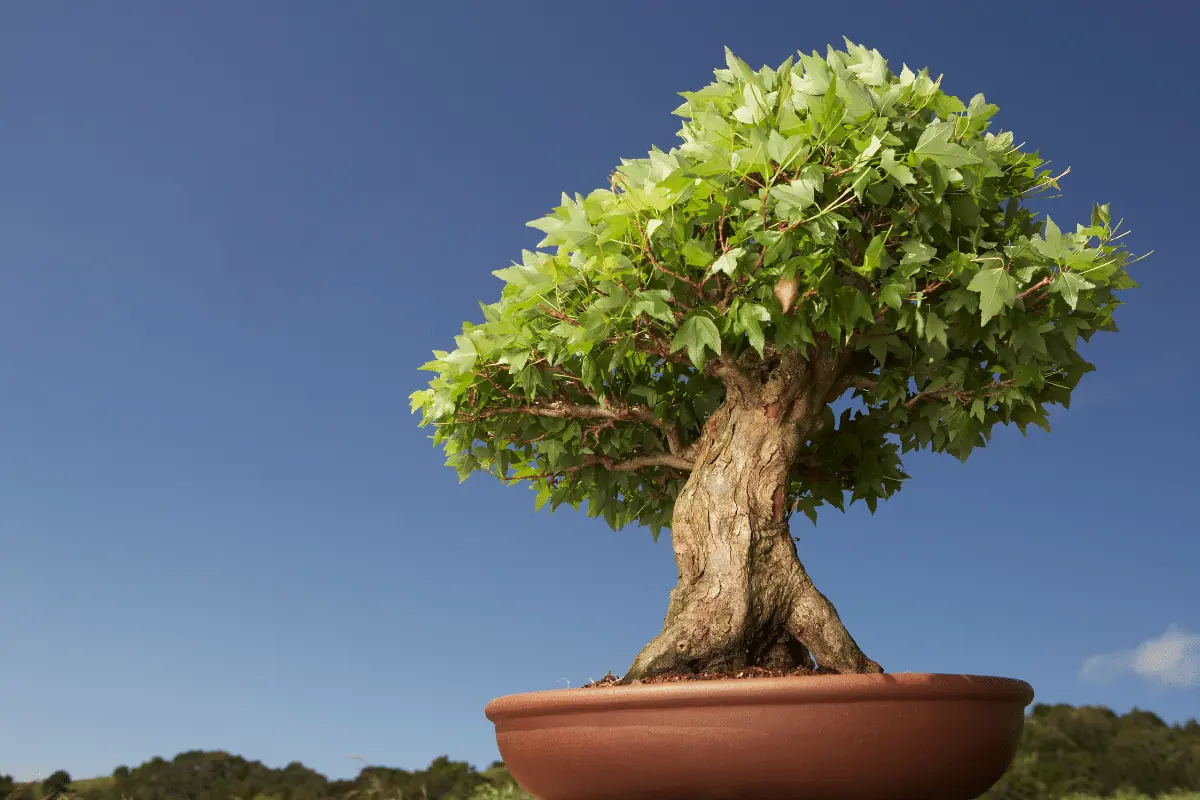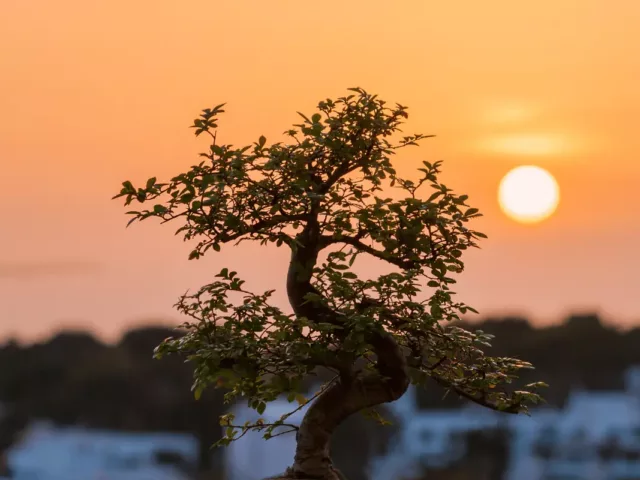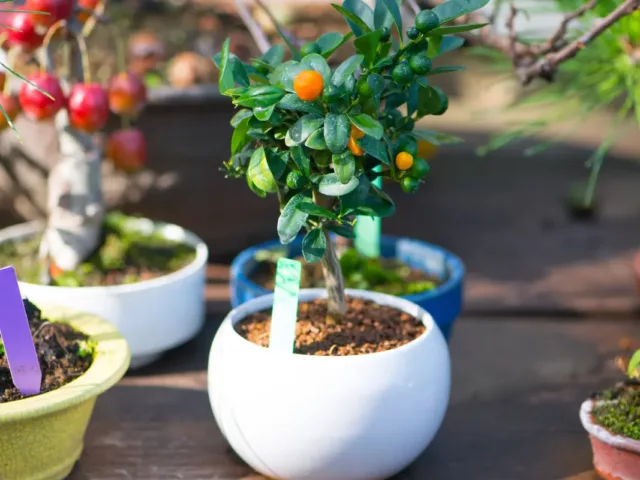Many people mistake “Bonsai” as the name of a tree whereas, it is but an art form one uses to grow any tree of their choice. This art form has been around for more than a thousand years and there are many popular misconceptions about it. If you are new to the world of bonsai, you may wonder, are bonsai trees genetically modified? Let’s find out.
Bonsai trees are neither genetically modified nor natural. A bonsai is an art form that one uses to grow any tree out there into miniature versions. Using this art, you can artificially stunt any ordinary tree by pruning its branches and roots. Japanese bonsai art uses several techniques to limit a tree’s growth and confine it to a smaller pot.
But if a bonsai tree is neither natural nor made genetically, you may be curious to know exactly what a bonsai tree is. Because it is such an ancient practice, there is much to get into detail about. So, let’s not waste any more time and just get on with it.

Are Bonsai Trees Genetically Modified?
To beginners and experts alike, the world of bonsai is always unique and fascinating. These miniature living sculptures of bonsai look so unique and striking that it’s easy for anybody to be impressed by their beauty.
But maybe because they look so appealing, people don’t bother delving too much deeper into the facts.
Many people still believe bonsai is the name of a genetically dwarfed tree, but this couldn’t be further away from the truth. A bonsai is no tree at all but an art form that has been around for more than a thousand years.
This concept originated in China before it became popular among the Japanese who studied and refined this practice for centuries.
The word “Bonsai” is a Japanese term and consists of two words- “Bon” and “Sai”. Bon translates to tray and sai to grow. In literal translations, bonsai means growing in a tray.
So the main focus of bonsai is to grow a miniaturized but realistic form of a single tree in a tray. Almost all bonsai plants are under a meter or four feet in height.
Bonsai plants are not dwarfed genetically but the grower uses several techniques to limit and redirect the plant’s growth.
These techniques include pruning, pinching buds, wiring branches, carefully restricting the fertilizer but not abandoning it, and growing it confined in a small pot.
The cultivation of bonsai trees is not for medical purposes or food, but only for viewing pleasure.
Are Bonsai Trees Natural?
No, bonsai trees are not natural. People may not be aware but bonsai is not a certain species of a tiny tree. The literal translation of the word Bonsai is “tree in a pot” and you can use the art form to create miniature plants in small pots. This is an ancient art form that has been studied and refined for hundreds of years.
If you are wondering about whether or not bonsai trees are natural, you can be sure they are not. You can take any tree species and grow it into a beautiful bonsai tree.
Many techniques such as pruning, pinching buds, wiring branches, and giving a limited amount of fertilizers are implemented to constrain and redirect a plant’s growth.
A human must guide the plant to keep it under a meter or four feet of height, though this height is typically outside and not inside.
If you have any particular plant you like, you can have it grow up to be a bonsai tree. But some plants are easier to design because they have smaller leaves.
Other than that, you can use any species of plants to create a Bonsai if they:
- Grow true branches,
- Has a woody trunk or stem,
- Is sustainable in a container with restricted roots and food storage capabilities,
- Have small or reducible leaves.
But if you are looking for naturally born bonsai trees, you most possibly won’t find them. Bonsai trees are natural sculptures that are ultimately a replication of nature.
In the form of a miniature tree, it expresses the beauty of nature using all kinds of human-made phenomena imaginable.
The art of bonsai is all about total dedication towards taking care of a tree and pruning and shaping it to grow strong while confining it in a smaller size and a pot.
Such meticulous pruning and shaping cannot come without the guidance of a human. So it’s not possible to find bonsai trees in nature.
How Are Bonsai Trees Made?
We already know that bonsai is an art form for growing miniature trees in a pot. But as art, Bonsai is much more than just that. The technique is to maintain the tree’s natural form and bring balance to it at the same time as an artistic composition.
Without a doubt, making a bonsai tree will require much skill, dedication, and patience. Only through balanced care and planning can you build a support system to keep these beautiful growing artworks blooming.
To grow a bonsai tree, the pot is traditionally wide and flat so that it can balance the shape of the branches and trunk. To make a bonsai tree, the process starts with choosing a source material tree.
There are different methods to bonsai trees. A few of the main ones are:
Seeds
There is a selection of bonsai plants that can easily grow from seeds. Many online vendors sell seeds for bonsai plants. Seeds work as an excellent resource as a grower has the independence to grow many unique bonsai specimens.
If you don’t have any access to exotic species, this is a great option you can go for. But seeds can take much time to sprout and mature. So a seed-grown bonsai may even take a lifetime to grow properly.
A mature bonsai can take around 35 years to grow from seed.
Propagating by Cuttings
You can propagate bonsai trees by cutting them and it is another great source that works better with some specific species.
If you start with a cutting, grape, willow, and fig are a great choice as you can grow them into a bonsai tree with no hassle.
They can be easily gathered from the wild or purchased/traded through online forums.
Nursery-Grown or Wild Trees
Another good starting point for bonsai trees is nursery-grown trees or wild ones. Most of them will have a sturdy trunk that can be easily trimmed down to a suitable size.
This method allows bonsai to grow much easily and faster than growing from a seed. It usually takes trees 5 to 10 years to reach medium size.
Shrubs or Small Trees
Shrubs are easiest to alter and use as a bonsai tree. You can find cheap shrubs or trees from restaurants, hotels, or businesses that are about to shut down. They are usually an excellent source for unwanted plants.
After a healthy plant has been chosen as the source material tree, then the grower trains it into a modern or classic style using various techniques.
The many techniques include foliage, crown, root and branch pruning, ramification, pinching, and others. Finally, the grower shapes it into the chosen style and confines it in a small pot to restrict and redirect its growth.
Conclusion
Bonsai is an ancient art form and technique to create miniature plants and landscapes. But not many are well known about the world of bonsai and believe it is a genetically modified tree.
If you are curious to know the truth and are wondering are bonsai trees are genetically modified, I cleared up most of the misconceptions in this article. I hope now you are well aware of how Bonsai trees are made. Thank you for reading till now.






